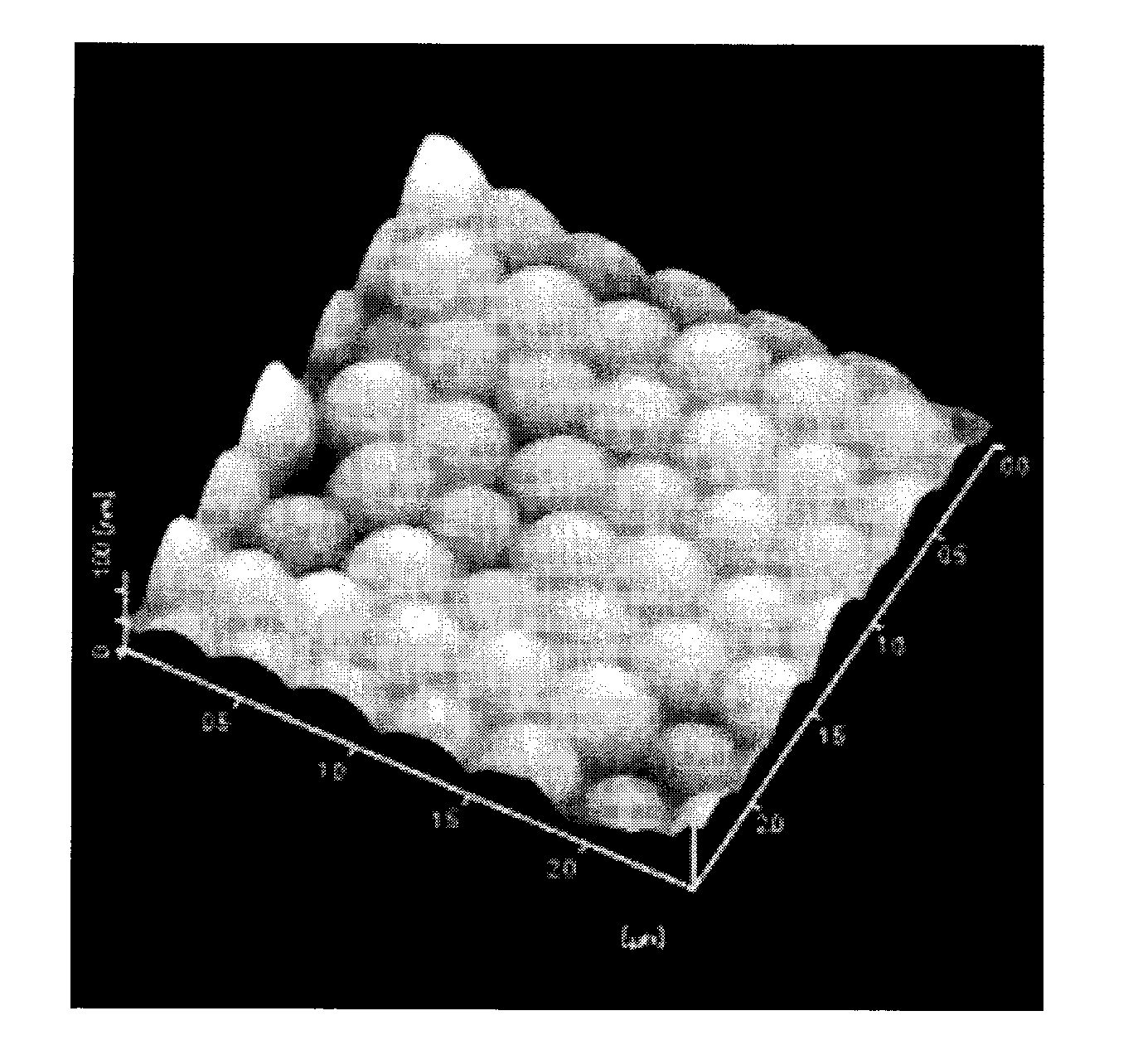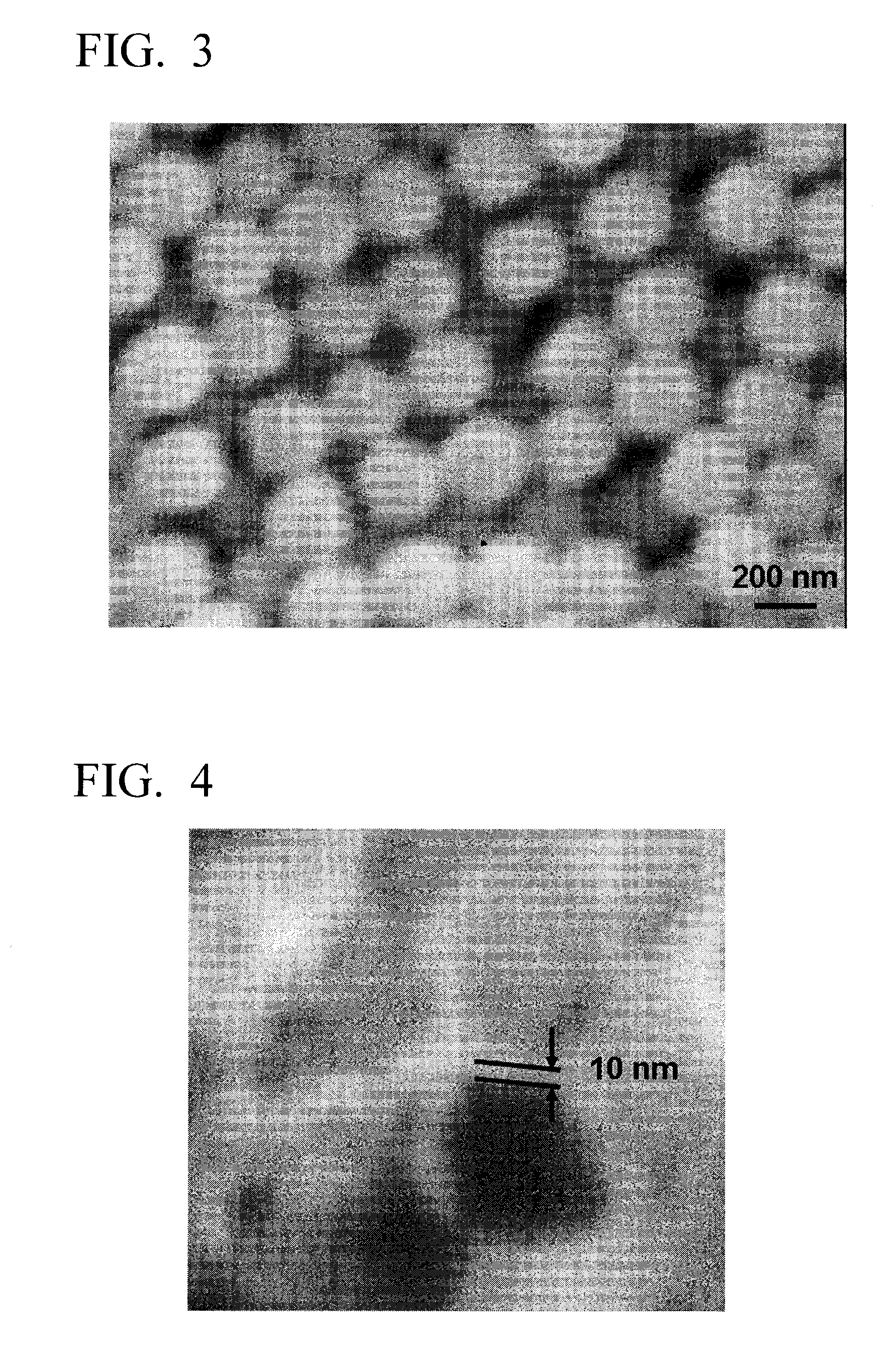Organic/inorganic composite coating film, structural color film using the same, and preparation methods thereof
- Summary
- Abstract
- Description
- Claims
- Application Information
AI Technical Summary
Benefits of technology
Problems solved by technology
Method used
Image
Examples
synthesis example 1
Synthesis of Hollow Polymer Particle B-1 Comprising PNIPAM-co-PGMA
[0134]To 290 ml of an aqueous solution in which 1.8 g of N-isopropylacrylamide (manufactured by Kohj in Co., Ltd., hereinafter referred to as NIPAM) had been dissolved was added 11.8 g of glycidylmethacrylate (manufactured by Wako Pure Chemicals Co., hereinafter referred to as GMA), followed by stirring at 70° C. under nitrogen flow (GMA / NIPAM=5.2 mol / mol). As the water soluble polymerization initiator, 10 ml of an aqueous solution in which 0.15 g of 2,2′-azobis(2-amidinopropane) dihydrochloride (V-50, manufactured by Wako Pure Chemicals Co.) had been dissolved was added thereto. By stirring it at the temperature for 1 hour, a dispersion liquid of the particles was obtained. This dispersion liquid was washed by a centrifuging operation, and then the shape of the fine particle was observed by means of SEM, and thus, it was found to be a monodisperse spherical particle having an average particle diameter of 225 nm (FIG....
synthesis example 2
Synthesis of Hollow Polymer Particle B-2 Comprising PACMO-co-PGMA
[0135]To 290 ml of an aqueous solution in which 1.8 g of acryloyl morpholine (manufactured by Kohjin Co., Ltd., hereinafter referred to as ACMO) had been dissolved was added 13.5 g of GMA, followed by stirring at 70° C. under nitrogen flow (GMA / ACMO=4.8 mol / mol). 10 ml of the aqueous solution in which 0.15 g of V-50 as the water soluble polymerization initiator had been dissolved was added thereto. By stirring it at the temperature for 1 hour, a dispersion liquid of the particles was obtained. This dispersion liquid was washed by a centrifuging operation, and then the shape of the fine particle was observed by means of SEM, and thus, it was found to be a monodisperse spherical particle having an average particle diameter of 270 nm (FIG. 3). This fine particle was crushed and its morphology observation was carried out. As a result, it could be confirmed that it was a hollow polymer particle having a cavity at the center...
example 1
Organic / Inorganic Composite Coating Film Using Aqueous Coating Composition Containing B-1
[0136]An off-white homogeneous aqueous coating composition was obtained by mixing 100 parts of an aqueous dispersion having the hollow polymer particle B-1 obtained in Synthesis Example 1 at a concentration of 20%, 20 parts of a 10% aqueous maleic acid solution, and 100 parts of a solution (50%) of a silane oligomer MS-51 (manufactured by Colcoat Co., Ltd.) in isopropanol, followed by stirring it in a bath at 20° C. for 2 hours.
[0137]The aqueous coating composition prepared as above was coated on a glass substrate having a size of 2.5 cm×7 cm with a coating rod (No. 30), and the obtained composite coating film was cured at each of the temperatures 25, 80, 130, and 180° C. for 30 minutes, and as a result, a good organic / inorganic composite coating film having no cracks could be obtained. In the SEM observation of the composite coating film surface that had been cured at 25° C. and 80° C., the sur...
PUM
| Property | Measurement | Unit |
|---|---|---|
| Particle diameter | aaaaa | aaaaa |
| Particle diameter | aaaaa | aaaaa |
| Particle diameter | aaaaa | aaaaa |
Abstract
Description
Claims
Application Information
 Login to View More
Login to View More - R&D
- Intellectual Property
- Life Sciences
- Materials
- Tech Scout
- Unparalleled Data Quality
- Higher Quality Content
- 60% Fewer Hallucinations
Browse by: Latest US Patents, China's latest patents, Technical Efficacy Thesaurus, Application Domain, Technology Topic, Popular Technical Reports.
© 2025 PatSnap. All rights reserved.Legal|Privacy policy|Modern Slavery Act Transparency Statement|Sitemap|About US| Contact US: help@patsnap.com



